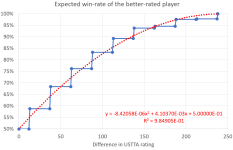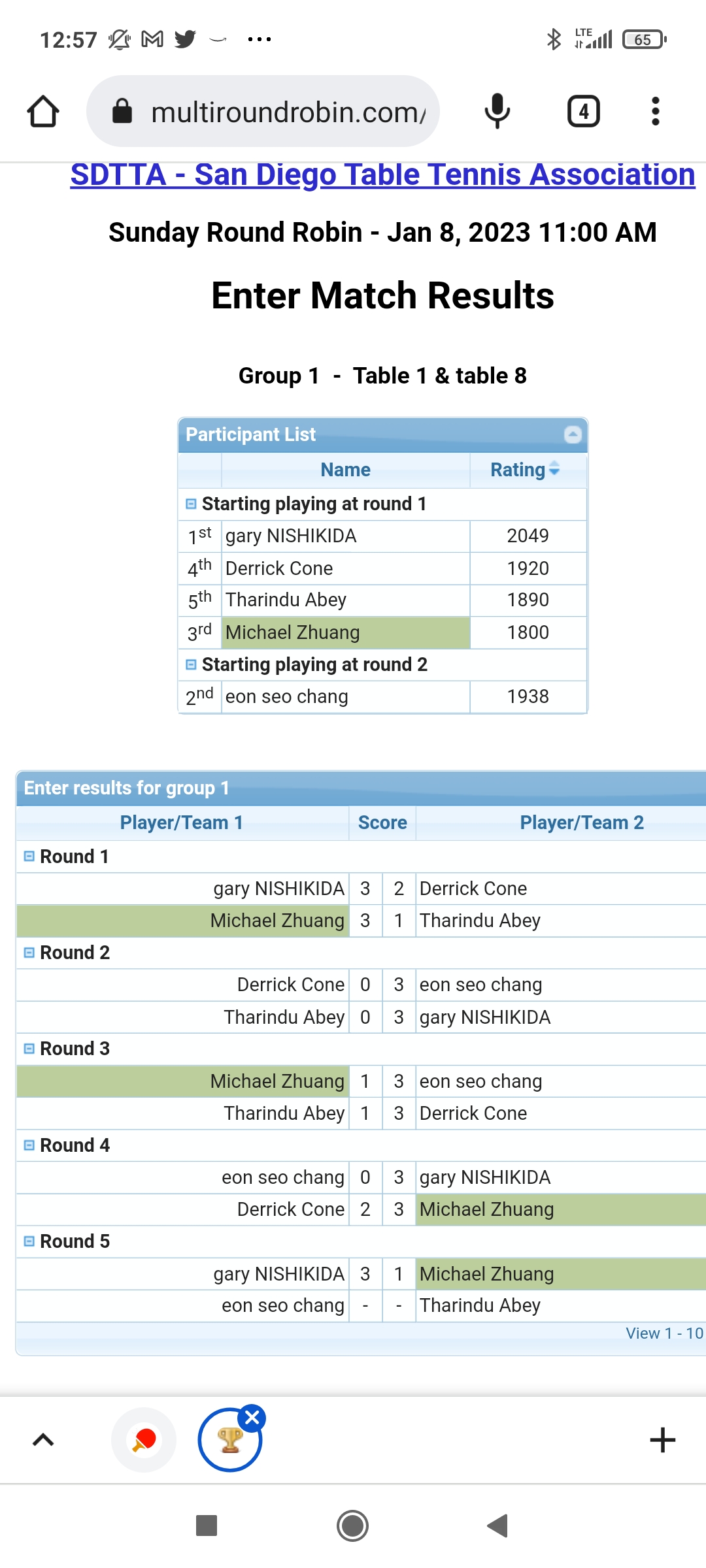RC Bayesian Theory ?
How do know it was applied accurately ? Did anyone check the work?
I didn't check the implementation but the formula on page 199 of this
http://www.ratingscentral.com/Doc/NewTTRS.pdf
makes sense to me. It is basically a double integral that takes into account the probability of each possible rating could have and then the probability that matches the real outcome of win or loss.
Can you make different assumptions of the variables involved ?
The big assumption is the temporal update. That is rate of change in uncertainty or the variance. The variance increases by 70^2 per year. This is just a scaling issue. It could have been 60^2 per year but the ratings would change less.
There is no public user check and balance, supporters defend by saying it is based on probability.
I understand the equation on page 199.
There isn't really anything tricky but it does require more number crunching to do the double integral. It wouldn't have been possible without modern PCs.
I did the math for Chris Weekes' probability distribution. Given the numbers the probability that Chris Weekes' performance is actually 431 is 0.0016. The probability that Chris Weekes' performance was actually 431-65 at the beginning is 0.0015. If I plotted the normal distribution for Chris Weekes it would look like a flat line at the bottom of the graph if I scaled the graph to plot the probability with a scale of 0-1 for the y axis. The standard deviation is very big.
Loopadoop, given Weekes standard deviation of 243 the results don't surprise me. However, you seem to have ignored the point that I made above. Why is Weekes' standard deviation so big? If the standard deviation is 243 then the variance is 243^2=59049. If the variance is supposed to increase by 70^2 a year that would mean his 431 rating is 12 years old. That 431 rating is very old and not that significant to the RC algorithm.
There is nothing wrong with the RC system but I know of disasters in how it was used by untrained directors.
Since pgpg and loopadoop are on another TT forum then must know of Eric Fountain. He plays in the Blitz Tavern Thursday league.
http://www.ratingscentral.com/EventSummary.php?EventID=19651
People that have watched Eric play know he is much better than 1355. He is a solid 1650 USATT player. The RC ratings in the Portland area are depressed because the tournament directors started most players with ratings that are far too low.
Within a club the RC ratings are significant because only the difference in ratings mean anything but ratings from different clubs or areas cannot be compared unless there is the ability to play outside clubs so that any imbalance will even itself out but what club would what to play a Portland club if they know their ratings will be brought down?
It isn't the numbers or formulas that are the problem. It is the people.












